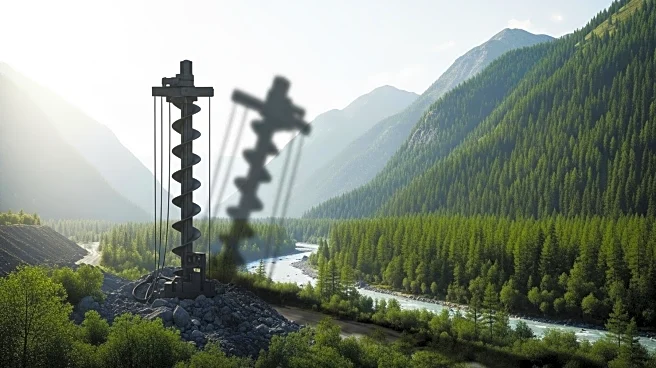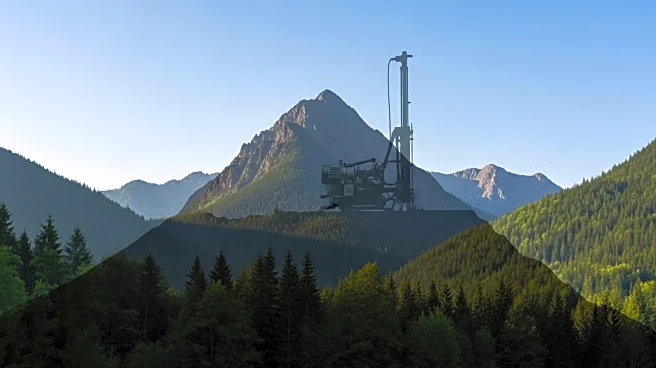What's Happening?
The U.S. Forest Service has granted Hecla Mining Company an exploration permit for a site south of Libby, Montana, known for its copper and silver deposits. Hecla plans to spend over a decade assessing the viability of mining these resources, which include an estimated 1.5 billion pounds of copper and 183 million ounces of silver. The exploration will involve dewatering and rehabilitating existing mine shafts, extending them, and conducting mineral exploration from underground drill stations. While the project promises economic benefits, it has faced criticism from conservation groups concerned about potential environmental impacts, including effects on groundwater and local wildlife.
Why It's Important?
The approval of the exploration permit is significant for Montana's economy, potentially creating jobs and boosting local industry. However, it raises environmental concerns, particularly regarding the impact on the Cabinet Mountains Wilderness and protected species like grizzly bears. The project exemplifies the ongoing tension between economic development and environmental conservation. Stakeholders, including local communities and environmental groups, are closely monitoring the situation, as the exploration could set precedents for future mining projects in sensitive areas.
What's Next?
Hecla Mining Company is in the process of obtaining a new water discharge permit from the Montana Department of Environmental Quality, expected in 2026, to support further exploration activities. The exploration phase is projected to last 16 years, followed by a reclamation period. Future decisions on mining will depend on data collected during exploration, requiring new operational plans and public permitting processes. The project's progress will likely continue to be a point of contention among environmental advocates and industry supporters.
Beyond the Headlines
The exploration project highlights broader issues of resource management and environmental policy in the U.S. It underscores the challenges of balancing economic growth with ecological preservation, particularly in areas with rich natural resources. The outcome of this project could influence future regulatory approaches and community engagement in similar initiatives.












